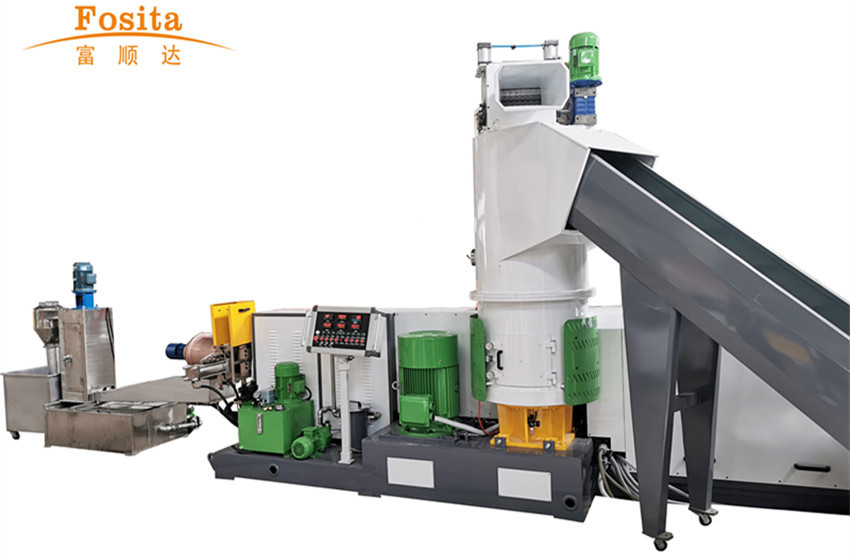
The plastic pelletizing machine recycles scrap plastic into a usable clean raw material for manufacturing. This process offers several benefits to plastic manufacturers.
It combines shredding, extruding and pelletizing into one machine. Its cutter compactor integrated design crushes, dries and compacts the material, enabling fast and stable feeding from the compactor directly to the extruder screw.
Recycling of Plastic Waste
Using a plastic pelletizing machine, recycled scrap plastics can be repurposed into clean raw materials that can be used in manufacturing. This is a key step in a closed-loop recycling process that reduces waste and saves money.
A growing number of companies are investing in mechanical recycling processes that rely on high-temperature melting and extrusion to turn post-consumer plastic into new products. However, the low-density resin known as polypropylene (PP) poses special challenges. Unless it is carefully separated, it can clog machinery, and the long polymer chains can shorten over time, degrading the quality of reprocessed material.
To overcome these issues, Unilever recently announced a technology called CreaSolv that dissolves PP into a liquid, drains it, dries it and then extrudes it into new products. Similarly, scientists are working on chemical recycling methods that can transform mixed plastics into fuel or other useful products without requiring extensive sorting or remelting. These advanced technologies have the potential to revolutionize the way in which we recycle plastic, making it possible to reuse materials that can’t be mechanically recycled today.
Cost-Effective Recycling
The plastic pelletizing machine is a powerful tool for reducing the environmental impact of your company’s production. The machine turns waste plastic into recycled pellets that can be reused to create new plastic products. This process reduces oil usage and carbon dioxide emissions, as well as the amount of waste that requires disposal.
Plastics are often made from polymers that are derived from petroleum or natural gas. Recovering these petrochemicals for use in re-manufactured plastic is referred to as chemical recycling, and it can be economically viable on an industrial scale or in localized markets where the costs of alternative forms of waste disposal are high.
However, simply melting plastic down to a liquid state to reuse it is not a cost-effective solution on a global scale. It takes significant energy to melt and transform plastic back into its petrochemical constituents. Reverse-polymerization is a more economical alternative, but it is not yet technically feasible without substantial subsidies.
High-Quality Pellets
The plastic pellets produced using the machine are suitable for a range of applications. They are not only a valuable resource, but they also help to reduce production waste and eliminate the need for raw materials.
The pellets produced need to be of the highest quality in order to ensure consistency throughout a production run. Imperfections in pellets such as tails, fines and voids can be detrimental to the end application and cause issues with subsequent equipment.
To avoid these defects, the process must be optimized for each material used in the pelletizer. This requires experience with the different formulations and a comprehensive lab to test for proper pelletizing. The right combination of pumps, filters and water systems must be selected to achieve optimum results. A good choice of cutter blades can significantly improve pellet quality as well. These include helix-cut blades, which allow strands to be cut in a more uniform manner. Helical blades also prevent the helix from sticking to the die and reducing the number of dropped strands.
Closed-Loop Recycling
If you are interested in taking your sustainability to the next level, consider working with a plastic pelletizing machine that can help your company implement closed-loop recycling. This is considered the best form of recycling since it is more sustainable and allows your products to be recycled indefinitely without losing their quality or being disposed of in landfills and oceans.
This type of recycling requires a few key elements to work. The first is collecting recyclable materials from consumers through blue bins and drop-off centers. These items are then sent to processing facilities that prepare them for specialized manufacturers. The last step is manufacturing new products using the recycled materials. This can involve creating the same product or a completely different one.
A great example of this is the clothing manufacturer Eileen Fisher, which has taken back textiles that its customers no longer want or need and repurposed them into other textiles. Another example is Urban Mining, which reprocesses scrap magnets into custom-made ones for its customers.